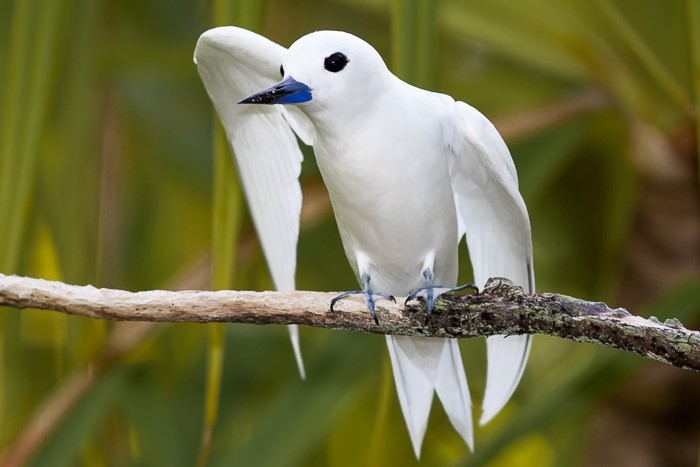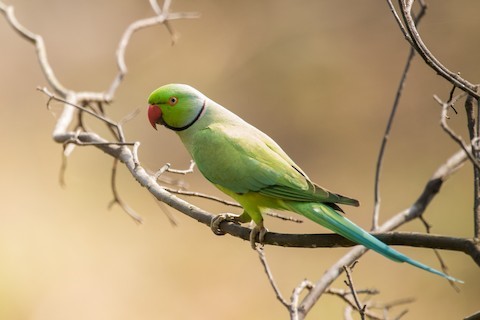Waikiki, Oahu, Hawaii
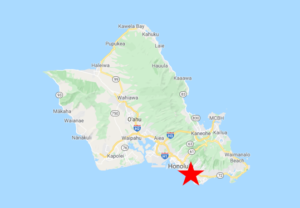
The tourist hub of Waikiki is the first stop on many travelers’ Hawaiian itineraries. Those who notice birds will find more introduced species than native ones. Fortunately, they are also likely to see Honolulu’s peculiar specialty, the Common Fairy-Tern, a dainty and ethereal seabird which, for reasons unknown, colonized the city in the late 1900s, and is not readily found elsewhere in the main Hawaiian Islands. Waikiki is a good place to find it, along with various transplants such as: Eastern Spotted and Zebra Doves, Rose-ringed Parakeet, Red-vented and Red-whiskered Bulbuls, Common Myna, Common Waxbill, Java Sparrow, Yellow-fronted Canary, Red-crested Cardinal, and Saffron Finch.
Orientation
Directions
Waikiki is a seaside district in the eastern half of Honolulu’s urban core, about 15 minutes’ drive (8 miles), traffic permitting, from Hawaii’s largest airport, Daniel K. Inouye International.
From the airport, take the main freeway, H1, east for about 7 miles to Exit 23, Punahou Street southbound. After one long block, turn right (west) onto South Beretania Street, then take the first left (south) onto Kalakaua Avenue, which becomes the main thoroughfare through Waikiki.
Birdfinding
Waikiki is an artificial peninsula formed by the Ala Wai canal, which extends inland from Kahanamoku Lagoon, then turns southeast to parallel the coastline for about a mile and a quarter, Strictly speaking, Waikiki is the strip of land between Ala Wai and the beaches, but the area of recreational interest extends about a mile farther southeast to include Kapiolani and Diamond Head parks, and about a mile farther northwest to include Ala Moana and Kaka’ako parks.
The Common Fairy-Tern (more often known as the White Tern) is Honolulu’s emblematic bird. It nests on bare limbs of trees throughout Waikiki, and elsewhere in Honolulu, having colonized the city over several decades starting in the 1960s—an unlikely and inspiring story. The local population is large and continuously present, well-known and easily observed by any visitor to Waikiki.
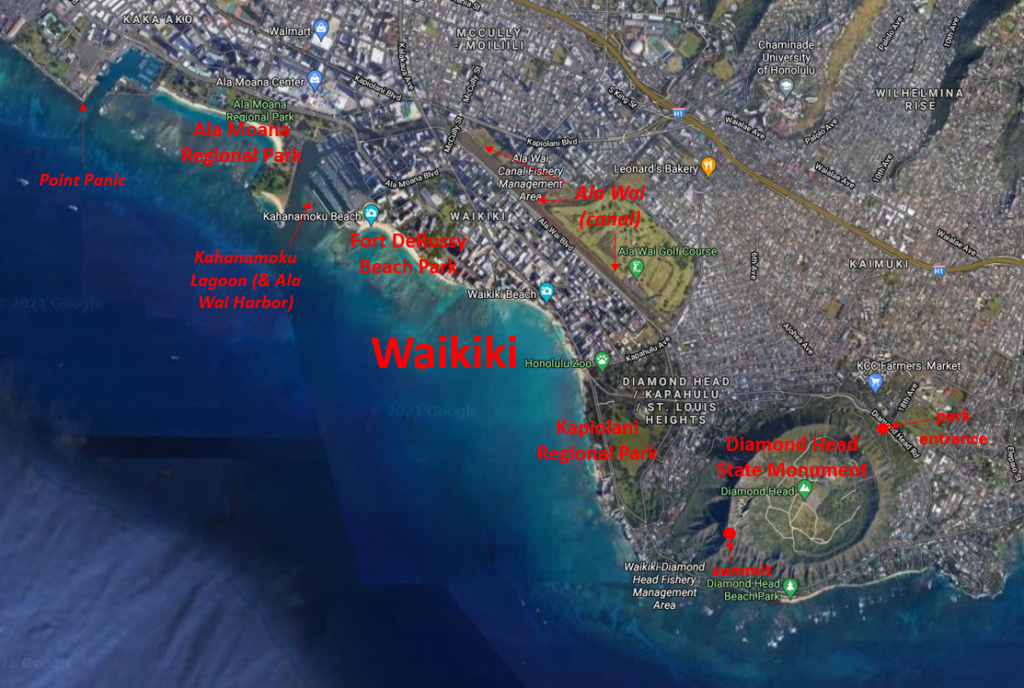
Most of the other birds of likely interest to visitors are introduced species, which dominate Oahu’s avifauna. Several such species are absent from all or most of the continental U.S., including: Eastern Spotted Dove, Zebra Dove, Rose-ringed Parakeet, Red-vented and Red-whiskered Bulbuls, Warbling White-eye, Common Myna, White-rumped Shama, Common Waxbill, Scaly-breasted Munia, Java Sparrow, Yellow-fronted Canary, Red-crested Cardinal, and Saffron Finch.
Few indigenous birds remain, but one notable migrant that is present during most of the year and often conspicuous on local lawns is the Pacific Golden-Plover.
Kapiolani Regional Park. The best place in Waikiki to see most of the species listed above is Kapiolani Park, an oasis of greenery that includes the Honolulu Zoo. Species whose local center of abundance is Kapiolani Park include: Rose-ringed Parakeet, Red-whiskered Bulbul, Warbling White-eye, White-rumped Shama, Common Waxbill, Scaly-breasted Munia, Java Sparrow, Yellow-fronted Canary, and Saffron Finch.
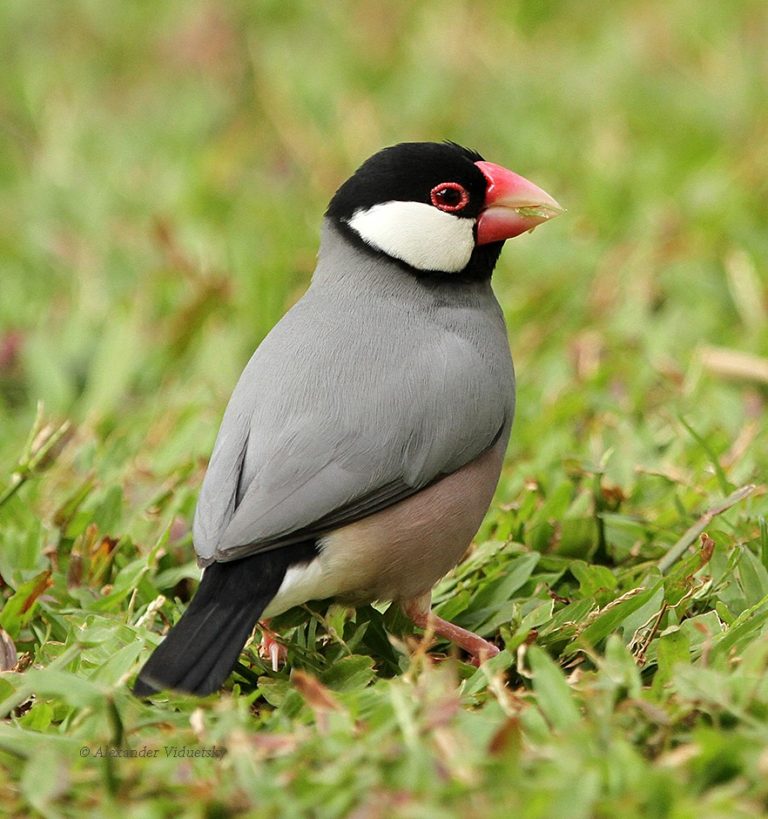
Waikiki supports a large populations of Java Sparrow, which is endangered in its natural range. © Alexander Viduetsky
Additional species that have been seen at Kapiolani Park more sporadically, but often enough to keep in mind, include: Gray Francolin, Red-crowned Parrot, Red-masked Parakeet, Japanese Bush-Warbler, Chinese Hwamei, Red-billed Leiothrix, African Silverbill, and Chestnut Munia.
Fort DeRussy Beach Park. Within Waikiki proper, the best area for birds is Fort DeRussy Beach Park, an area of lawns and shade trees at the western end of Waikiki, a five-minute walk from several of the largest hotels. Most of the species associated with Kapiolani Park are at least occasionally found at Fort DeRussy, and a few are found commonly—most notably Java Sparrow and Yellow-fronted Canary.
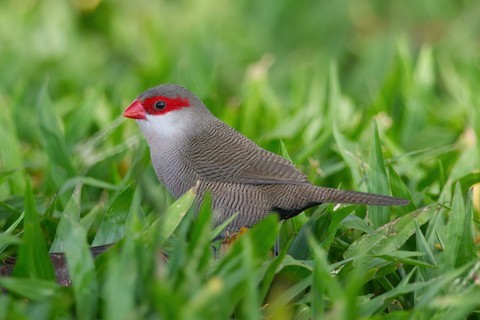
Common Waxbill is especially common at Kapiolani Park. © Kyle Elfman
Ala Moana Regional Park. Just west of Waikiki proper, across Kahanamoku Lagoon is the extensive, pleasantly landscaped beachfront park Ala Moana. The set of birds reported there is very similar to the ones reported from Fort DeRussy, but with a few more shorebirds—most notably, Wandering Tattler occurs regularly during most of the year.
Point Panic. West of Ala Moana, across the Kewalo Basin Harbor, is yet another seaside park complex, Kaka’ako Waterfront Park. The land area of this park is fairly heavily developed, low-value terrestrial habitat, but its southernmost projection, Point Panic, is sometimes a good vantage point for a few seabirds: mostly Brown Booby, and occasionally Red-footed.

Yellow-fronted Canary at Fort DeRussy Beach Park. © Nate Brown
Diamond Head. Looming to the east of Kapiolani Park is the ridgeline of Diamond Head (a.k.a. Le’ahi) crater, which is the most heavily visited of Hawaii’s state parks. Although its landscape is more natural and its views are inspiring, Diamond Head is generally not as productive for birds as Kapiolani Park.
During the 1960s and ‘70s, the park was noted for harboring small populations of several unusual exotics, such as Red-cheeked Cordonbleu and Lavender Waxbill, but these flocks did not become self-sustaining. One introduced species that retains a foothold and is otherwise scarce in the urban zone is the Gray Francolin. The 762-foot summit is one of the better vantage points in Honolulu to spot Great Frigatebirds which occasionally soar along the coastline.
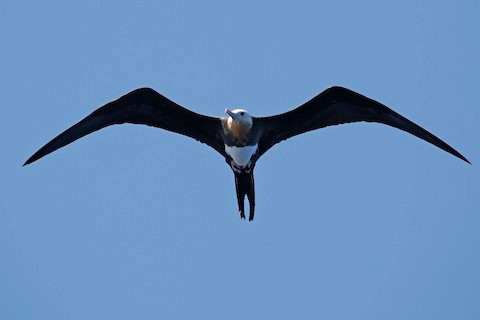
Great Frigatebirds, like this juvenile, sometimes soar past Diamond Head. © Laura Keene
During peak tourist season, weekends, and holidays, Diamond Head often becomes crowded and parking in particular becomes complicated. The park is generally open from 6:00 a.m. to 6:00 p.m. six days per week (closed on Wednesdays). Fees for non-residents have been $5 to enter and $10 to park. Hawaii residents enter and park for free. The park entrance is on Diamond Head Boulevard on the northeastern side of the park, and the summit is on the southwestern side of the crater rim.
Services
Accommodations
As the epicenter of Hawaii’s tourist economy, Waikiki has the state’s largest cluster of hotels.
Notes
Links
